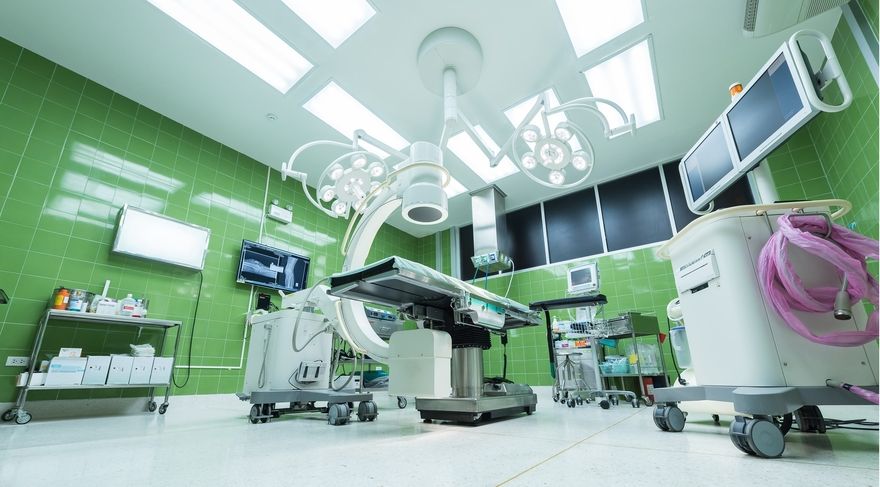PMR and Upper Finance: significant growth observed in robotic surgery market

Ten post jest także dostępny w języku:
![]() polski
polski
Intuitive Surgical, a leading manufacturer of robotic surgery devices, has reported an increase in revenue of 30% year on year in its Q3 2021 results. It also increased the number of procedures by 20% year on year on a global basis by means of the da Vinci system. Synektik SA, the Polish distributor of the da Vinci system, also achieved record results. In the past quarter, 548 surgical procedures were assisted by the da Vinci system, and this represents a year-on-year increase in excess of 110%. The majority, almost 60%, are urological procedures, but the arrangement of these procedures is being transformed markedly into a more balanced breakdown of specialties. Gynaecological procedures already account for 18%, as opposed to 12% in 2020, and the proportion represented by surgery rose to 16% in 2021, in comparison with 11% in 2020.
In response to these dynamic developments, the Polish Federation of Hospitals (PFSz) has established the Coalition for the Development of Robotics. Joanna Szyman, a member of the board of the Federation, and the president of the NEO Hospital group, has said that the Federation aspires to create a centre of expertise in medical robotics, at which clinical partners, industry and science meet and work together in the areas of training, research and development and data analysis, in order to optimise the implementation of robots and new technologies in medical practice.
The evolution of robotic surgery is at an extremely interesting point of development, as many potential competitors are currently preparing their solutions for market launch. Poland, already has 16 authorised da Vinci systems, the first installation of the Versius system (CRM Surgical) has been carried out, and the ExcelsiusGPS systems from Globus Medical (for spinal surgery) and the CorPath GRX system, developed by Siemens for cardiac procedures, are already active. One important development for the market was the CE certification obtained in mid-October for Medtronic’s HUGO system for urological and gynaecological procedures, which account for approximately half of all robotic procedures carried out today.
Around the world, approximately 3% of all operations are now carried out by robotic means. The high cost of the technology has, so far, constituted an obstacle to market development. The advent of the HUGO RAS system creates an opportunity for the widespread use of robots, as its developers have promised to remove the cost barriers associated with the use of robotic systems. The cost of the equipment has not yet been disclosed.
Estimates based on the results of a survey carried out specifically for the PMR and Upper Finance Group report suggest that, in a country the size of Poland, there should be about 50 robots by the end of 2025, and that this should allow 15,000 procedures to be carried out every year. By the end of 2021, approximately 2,500 procedures should be possible. According to Monika Stefanczyk, the Head Pharmaceutical and Healthcare Market Analyst at PMR, the report claims that, between 2021 and 2026, the average annual growth rate (CAGR) of the robotic surgery market subgroup will be as high as 23%.
The development of robotic surgery also brings opportunities associated with a new model of medical staff training, for surgeons, in particular. Pawel Wisz, MD, PhD, in cooperation with Stefano Puliatti, MD, the Head of the Department of Urology at the University Hospital of Modena (Italy), and Ruben de Groote, MD, of the OLV Hospital in Aalst (in Belgium), recently carried out, for the first time in Poland, six procedures, five radical prostatectomies and one partial nephrectomy, with the support of two da Vinci robots, in one day. The event was designed to present the effectiveness and quality of the treatments carried out with the assistance of robots. The procedures lasted for between 90 minutes and two hours, on average, and this is the global standard. All doctors are associated with Orsi Academy, which is the largest training centre in Europe, where optimal models of surgeon training in the field of robotic surgery have been developed to guarantee a high level of efficiency and quality in the procedures carried out.
Pawel Wisz, MD, a board member of the European Robotic Urology Society (ERUS), at which he is responsible for training programmes and the education of medical staff in robotic surgery, has said that the modern model of training surgeons assumes that an appropriate level of skill has been acquired outside the operating room, and that this approach to training is based on teaching skilful, targeted action and offering the trainee supervised surgical experience, giving them the opportunity to integrate the knowledge which they have already acquired and to develop their surgical skills in a safe environment.






